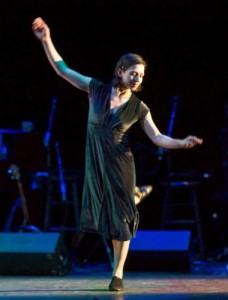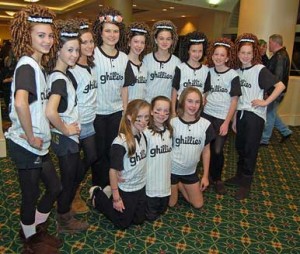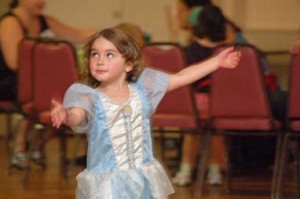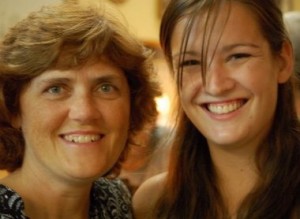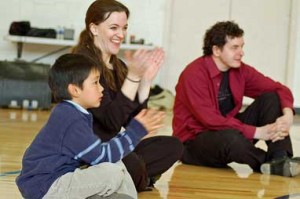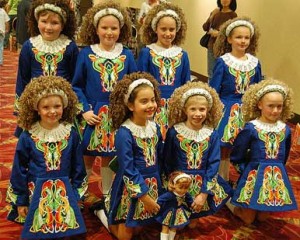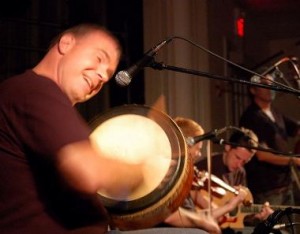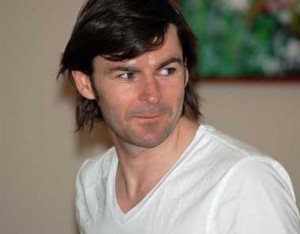Before there were wigs of bouncing corkscrew curls, costumes that look like pages torn from the Book of Kells, and athletic aerial lifts that put Michael Jordan to shame, Irish step dancing was, like other folk dances, a joyous celebration of music that anyone, from toddling to doddering, could do.
And surprise—it still is. Old-time step dancing, like sean nos (the Irish phrase meaning “old style”), is alive and well.
“Just google ‘sean nos dancing’ and you’ll see hundreds of website come up,” says Kieran Jordan, a former competitive Irish step dancer from Glenside who now performs, choreographs, and teaches in Boston. “Sean nos is huge in Ireland right now. It’s a dance form that nearly died out because it was considered too wild or free form, compared to the structured, modest step-dancing where you keep your arms down and there are rules on what you wear and how you look.”
Jordan not only teaches sean nos and other, older forms of step dancing, she recently produced a documentary film, “Secrets of the Sole: Irish Dance Steps and Stories,” with two of her favorite old-time dancers, Kevin Doyle and Aidan Vaughan. Doyle, a Rhode Island native, does a form of solo step dancing that might remind you of the tap-dancing style of Fred Astaire, Gene Kelly, or even Bill “Bojangles” Robinson—that seemingly effortless, percussive dance that turns the feet into virtual musical instruments. Vaughan dances the traditional sean nos style, his moves so close to the floor even Jordan admits she had to practically get down next to him to learn the steps.
“Sean nos style, was primarily danced in the far west of Ireland, a little more raw than competitive step dancing,” Jordan explains. “It’s very playful, but it can be loud and battering or floating and gliding.”
(Editor’s Note: You can see sean nos dancing live next Tuesday, December 9, at the Irish Center in Mount Airy, during the exciting “Irish Christmas in America” show, featuring Karan Casey and members of Teada.)
While “Riverdance” rekindled interest in competitive Irish step dancing with its codified style of dress and choreography—stiff upper body, arms down at the sides, aforementioned wigs and outfits–“old style dancing did almost die out in most parts of Ireland,” says Jordan. “But it’s something that even young people have latched on to lately. It’s very accessible; it brings the music to life because you’re able to move your upper body and you can improvise a little more. Your feet stay close to the floor, you’re not jumping a whole lot, and you’re standing in a more natural stance rather than in ballet turnout. It’s a dance form meant for people of all ages. People can continue to do this kind of dancing into their ‘80s and ‘90s, and I love that about it. I’ve been doing Irish dancing for more than 25 years, and it’s high impact. Anyone in their 30s and is still doing it has had injuries, big or small. Sean nos is low-impact so it doesn’t pose the same problems.”
Jordan was four years old when she told her parents that she wanted to learn to step dance. “The first time I saw Irish dancing was at the St. Patrick’s Day Parade, she recalls. “I asked my parents if I could learn to do that. Fortunately, Rosemarie Timoney was giving classes at our church, St. Luke’s in Glenside, so I went there every Saturday. I have a lot of great memories of those early classes with her. I remember taking to it right away. I loved learning new steps, I loved the music, and I made good friends.”
But she also decided to go the competitive route, which meant she had to move from school to school to work with certified teachers. “It was important to go to feis (competitions, pronounced “fesh”) and learn news steps, so I changed schools a couple of times to seek that out.”
That’s a list of familiar names to anyone interested in Irish dance in the Philadelphia area: De Noghla, Coyle, McHugh. Jordan competed nationally for 14 years, performing several times at Radio City Music Hall in Frank Patterson’s “St. Patrick’s Day Spectacular,’ which featured 100 champion step dancers in what must have felt and sounded like an earthquake of magnitude 8. When she was at the McHugh School, she joined teachers Sheila and Tara McHugh in performing with Mick Moloney, then folklore professor at the University of Pennsylvania. Moloney, now at New York University, was part of a musical trio with Seamus Eagan (of Solas) and Eugene O’Donnell, a fiddler and step dancer. Just as Moloney revived Philadelphia interest in Irish traditional music, O’Donnell helped bring about the renaissance of step dancing in the region when he arrived in the US from Derry in 1957.
While most teens were bagging at the Acme or asking people 1,000 times a day, “Do you want fries with that?” Jordan was performing professionally. “I remember getting to use my mom’s car to go off to gigs and Mick always paid me. It was wonderful,” she recalls.
When she graduated from high school she won the first college scholarship given by the Irish Dance Teachers of North America and attended Boston College. But she never expected to wind up with a career in dance. “I thought I was going to be a journalist or an English professor. I always wrote for the school newspaper. I wrote for the Irish Edition when I was a teenager and in Boston, I worked for the Boston Irish Reporter for four years, though I was never far from the Irish dance scene, because that’s what I was writing about.”
She explored other forms of expression too, taking classes in jazz, musical theater, and other percussive dance styles, such as Appalachian clogging, tap, and Cape Breton step dancing. She found she loved the close interplay between dancer and musician these other styles offered, allowing the dancer’s personality to emerge and shine. Through Boston College’s Irish Studies Program and at University College in Cork and Limerick University, where she got her master’s degree in contemporary dancer performance, she met and learned from a variety of instructors, including Joe O’Donovan, a master of the “old style” Irish dancing. That’s where she also met Aidan Vaughan–while working on independent projects on sean nos dance that focused on his County Clare style. Jordan also won second place for her sean nos jig dancing at the Comortas Choilin Sheain Dharach, a sean nos dance festival in Connemara.
Her fate, it seems, was sealed. Today, she’s a fulltime performer and dance instructor, teaching her “Beyond the Feis” workshop in Boston, Cambridge, and wherever in the country she’s invited to teach (like Irish Week in the Catskills, where her daily classes are filled and her husband, artist Vincent Crotty, teaches painting). She also tours frequently. “A couple of weeks a month, I’m somewhere,” she laughs.
For the next few weeks, she’s working as choreographer for WGBH-TV’s annual Christmas Celtic Sojourn show (her old friend, Seamus Eagan, is music director), something she’s done for the past five years. “We even have a PBS special, a DVD and CDs, though it hasn’t left New England yet,” she says.
And her writing skills aren’t getting rusty. She’s using them wto market her dance DVD (while working on another instructional video). “I can write my own PR releases, so I’m grateful to have those skills,” she laughs. But she’s doesn’t regret choosing dance over journalism. While she’s happy to use her writing and dancing talents to help broaden the audience for Irish folk dance, it’s still the dancing, she says, “that’s where my heart is.”

